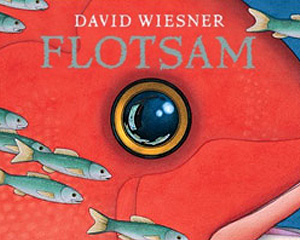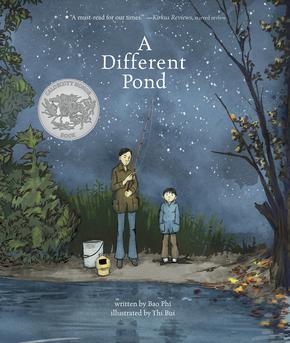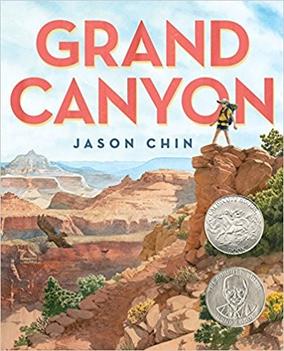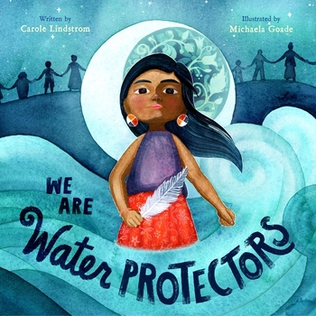
Wilson Alwyn Bentley, also known as Snowflake Bentley, was an American meteorologist and photographer, who was the first known person to take detailed photographs of snowflakes and record their features. He perfected a process of catching flakes on black velvet in such a way that their images could be captured before they either melted or sublimated, and elaborated the theory that no two snowflakes are alike.
Mary Azarian is an American woodcut artist and children's book illustrator. She won the 1999 Caldecott Medal for U.S. picture book illustration, recognizing Snowflake Bentley by Jacqueline Briggs Martin. It tells about the life of Wilson Bentley. She lives in Calais, Vermont. She produces original prints and has illustrated over 50 books.

The Snowy Day is a 1962 American children's picture book by American author and illustrator Ezra Jack Keats. It features Peter, an African American boy, who explores his neighborhood after the season's first snowfall. Keats’ illustrations helped pave the way for more inclusive and diverse children's literature. Keats received the 1963 Caldecott Medal for his collage artwork, which made The Snowy Day the first picture book with an African American protagonist to win a major children's award. The book's reception was largely positive, although some critics pointed out subtle stereotypes, such as how Peter's mother was portrayed. Since its publication The Snowy Day has sold millions of copies and has been translated, adapted, and honored leaving a lasting impression on generations of readers.

Flotsam is a children's wordless picture book written and illustrated by David Wiesner. Published by Clarion/Houghton Mifflin in 2006, it was the 2007 winner of the Caldecott Medal; the third win for David Wiesner. The book contains illustrations of underwater life with no text to accompany them.

Saint George and the Dragon is a book written by Margaret Hodges and illustrated by Trina Schart Hyman. Released by Little, Brown, it was the recipient of the Caldecott Medal for illustration in 1985. The text is adapted from Edmund Spenser's epic poem The Faerie Queene.

The Lion & the Mouse is a 2009 nearly wordless picture book illustrated by Jerry Pinkney. This book, published by Little, Brown and Company, tells Aesop's fable of The Lion and the Mouse. In the story, a mouse's life is a spared by a lion. Later, after the lion is trapped, the mouse is able to set the lion free. Adapting the fable, with the moral that the weak can help the strong, as a wordless picture book was seen as a successful way of overcoming the brief plot generally found in the source stories. While it was Pinkney's first wordless picture book, it was not the first time he had told the story, having previously included it in his Aesop's Fables, published in 2000. Pinkney, who had received five Caldecott Honors, became the first African American to win the Caldecott Medal for his illustrations in this book. His illustrations were generally praised for their realism and sense of place. The cover illustrations, featuring the title characters but no text, drew particular praise.

A Sick Day for Amos McGee is a 2010 children's picture book written by Philip C. Stead and was illustrated by Erin E. Stead. The book, published by Roaring Brook Press, depicts a zookeeper who has bonded with the animals he cares for and who come and visit him one day when he gets sick. Phillip Stead wrote the book hoping his wife Erin would illustrate it after a period where she had become discouraged with her art. The book was well reviewed, and Erin won the 2011 Caldecott Medal for her illustrations. The book received praise for its woodblock illustrations and for its message about what friends will do to help and support each other.

Locomotive is a 2013 children's book written and illustrated by Brian Floca. A non-fiction book written primarily in free verse, the book follows a family as they ride a transcontinental steam engine train in summer of 1869. The book details the workers, passengers, landscape, and effects of building and operating the first transcontinental railroad. The book also contains prose about the earlier and later history of locomotives. The book took Floca four years to create, which included a change in perspective from following the crew of the train to following a family. Floca conducted extensive research including his own train ride and consultation with experts to ensure he had the details all correct.

This Is Not My Hat is a 2012 American children's picture book by the author and illustrator Jon Klassen. The story is told through the unreliable narration of a little fish, who has stolen a hat from a big fish and how the big fish reacts to the theft. It is a thematic follow-up to I Want My Hat Back (2011) and was meant to be a more literal sequel until Klassen took a suggestion to change which animals were in the story. The book was well received by critics who praised its dark or ironic humor which could only be understood by comparing the words of the little fish's narration against the events of the illustrations. In addition to several positive reviews, Klassen received the 2013 Caldecott Medal and the 2014 Kate Greenaway Medal becoming the first book to win both awards. This is Not My Hat was also a commercial success.

Radiant Child: The Story of Young Artist Jean-Michel Basquiat is a 2016 picture book biography by Javaka Steptoe about Jean-Michel Basquiat. Using a style similar to Basquiat's, the book tells the story of his childhood and early career. It won the 2017 Caldecott Medal and Coretta Scott King Illustrator Award for its illustrations.

Wolf in the Snow is a 2017 wordless picture book by Matthew Cordell. The book was favorably received by critics and won the 2018 Caldecott Award. The story has drawn comparisons to fairy tales like Little Red Riding Hood. The nearly wordless book tells the story of a girl and wolf who each get lost in the snowstorm. Cordell used distinctive illustration techniques for the girl and the wolf.

Big Cat, Little Cat is a 2017 children's picture book written by Elisha Cooper. It was published by Roaring Brook Press, a subsidiary of Macmillan Books. In the story, a large, white cat welcomes a new black cat into a family. The white cat then dies, and the cycle begins anew when the family adopts a new kitten. Cooper was inspired to write the story after his family experienced a similar situation. Critics praised his illustrations, for their ability to help further the story's messages and themes. These monochromatic illustrations were different than the style Cooper normally employed when illustrating a book. The book was well-reviewed, and received a 2018 Caldecott Honor.

A Different Pond is a 2017 children's picture book by Bao Phi, illustrated by Thi Bui. The book tells the story of a boy and his father going fishing. Phi created the book because of his desire to have books about people like himself to read to his daughter. Bui's detailed illustrations allowed Phi to remove elements of the prose. Bui, who had never illustrated a traditional picture book before, won praise for her use of colors and was recognized with a 2018 Caldecott Honor. The book received positive reviews and appeared on best of 2017 book lists.

Grand Canyon by Jason Chin is a 2017 children's picture book. The book tells about the plants, animals and habitats of the Grand Canyon, both now and in the past, using the premise of a hiking trip there. The inspiration for the book was a trip in high school; Chin had originally conceived of a Grand Canyon origin story. The book marked the first time Chin used die cuts, in addition to his normal use of pen and ink, watercolors, and gouache. The book was awarded a 2018 Caldecott Honor for its illustrations and a 2018 Sibert Honor for its informative text. Grand Canyon is one of only a few non-fiction books that are not biographies to be recognized by the Caldecott.

The Rough Patch is a 2018 picture book by Brian Lies. An idea of Lies' for more than ten years, when it was published it was well received and was named a 2019 Caldecott Honor book. The story tells of a fox named Evan whose dog dies. Evan then experiences various emotions while grieving before adopting a new dog at the end of the book. The book was praised for Lies' mixed media illustrations, in particular the way he used light and shadow.

Bear Came Along is a 2019 picture book by Richard T. Morris and illustrated by LeUyen Pham. It tells the story of a group of animals on a river adventure. Published on June 1, 2019, Bear Came Along was based on memories Morris had of going to overnight camp for the first time. The watercolors, ink, and gouache illustrations Pham created were special for her. Critics wrote about her ability to juggle several different tones through the pictures. These illustrations were also generally seen as complementing the book's theme of being connected to others. The book was generally well reviewed and it received a 2020 Caldecott honor.

We Are Water Protectors is a 2020 picture book written by Carole Lindstrom and illustrated by Michaela Goade. Written in response to the Dakota Access Pipeline protests, the book tells the story of an Ojibwe girl who fights against an oil pipeline in an effort to protect the water supply of her people. It was published by Roaring Brook Press on March 17, 2020. The book was well received. Critics praised its message of environmental justice, its depiction of diversity, and the watercolor illustrations, for which Goade won the 2021 Caldecott Medal, becoming the first Indigenous recipient of the award. The book also received the 2021 Jane Addams Children's Book Award winner in the Books for Younger Children category.

The Paperboy is a 1996 children's picture book by American author and illustrator Dav Pilkey. Inspired by Pilkey's own experiences as a paperboy, it tells the story of a paperboy and his dog as they deliver newspapers in the early hours of the morning. The Paperboy received positive reviews from critics and was awarded a 1997 Caldecott Honor for its illustrations.

Seven Blind Mice is a children's picture book written and illustrated by Ed Young. Based on the Indian fable of the blind men and an elephant, the book tells the story of seven mice who, each day, explore and describe a different part of the elephant. It was well received by critics and received a Caldecott Honor for its illustrations.

Going Down Home with Daddy is a 2019 picture book written by Kelly Starling Lyons and illustrated by Daniel Minter. It tells the story of a young boy who attends a large family reunion at his great-grandmother's house and struggles to prepare a contribution to the family celebration. Inspired by Lyons's visit to a family gathering in rural Georgia, the book was published by Peachtree Publishing on April 1, 2019. The acrylic illustrations incorporate Adinkra symbols representing various concepts in Ghanaian culture. Critics praised the book's themes of family culture and heritage as well as Minter's illustrations, for which it received a Caldecott Honor in 2020. It also received the 2019 Lupine Award in the Picture Book category.



















